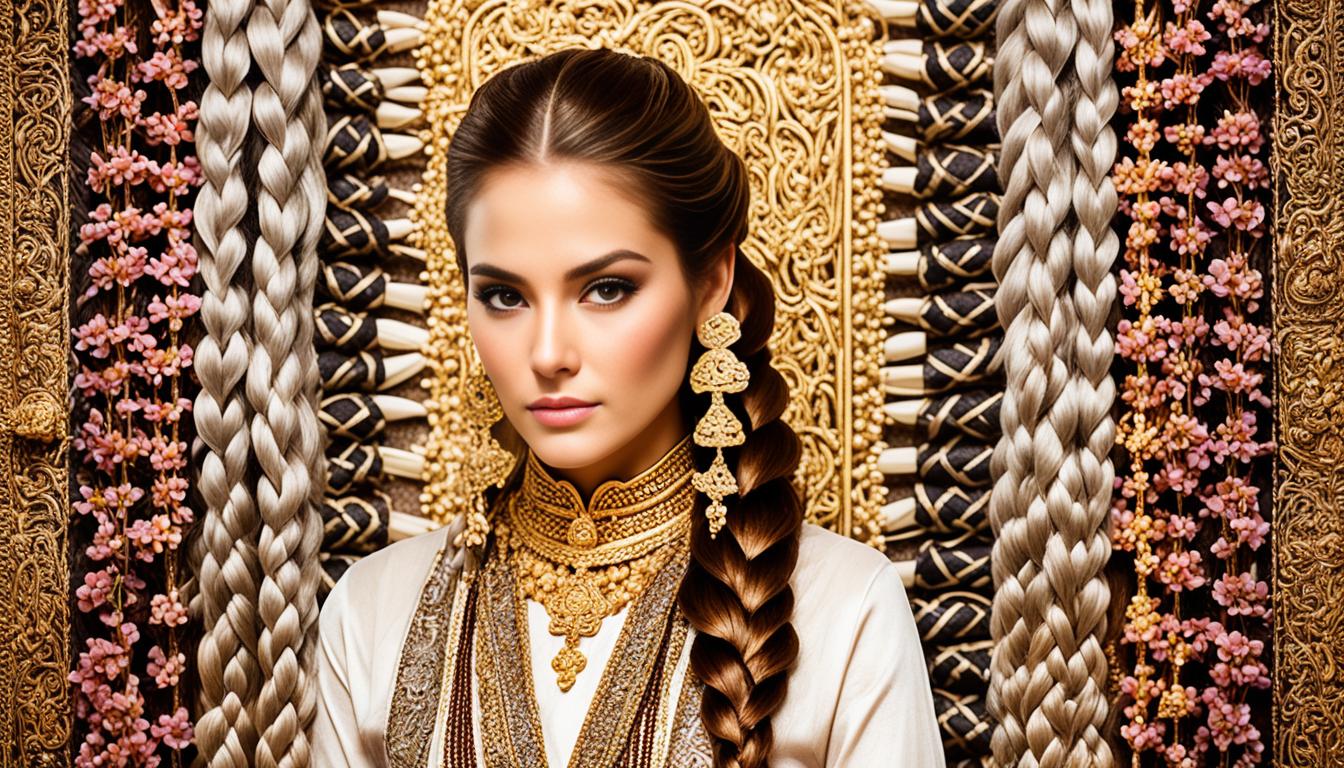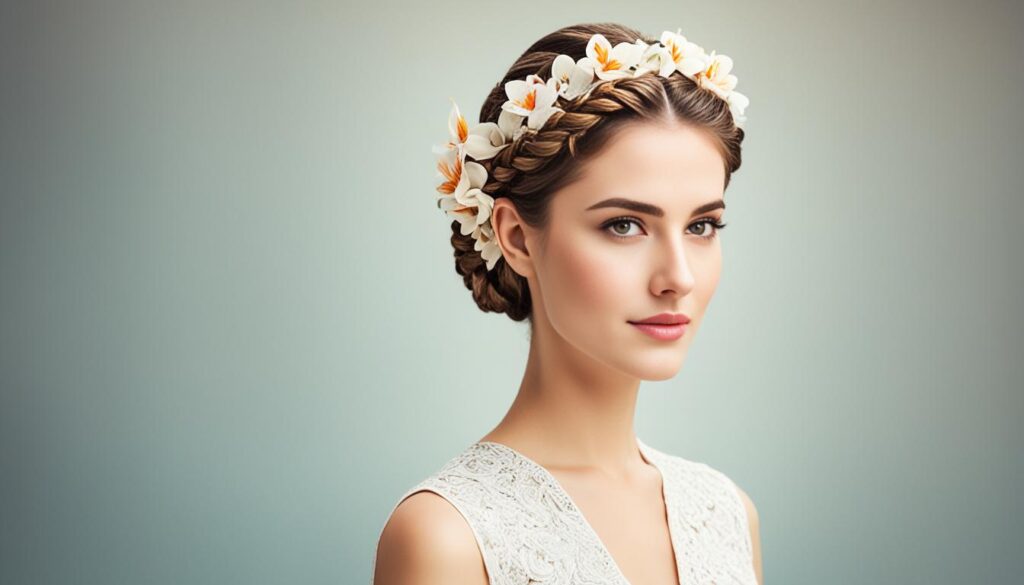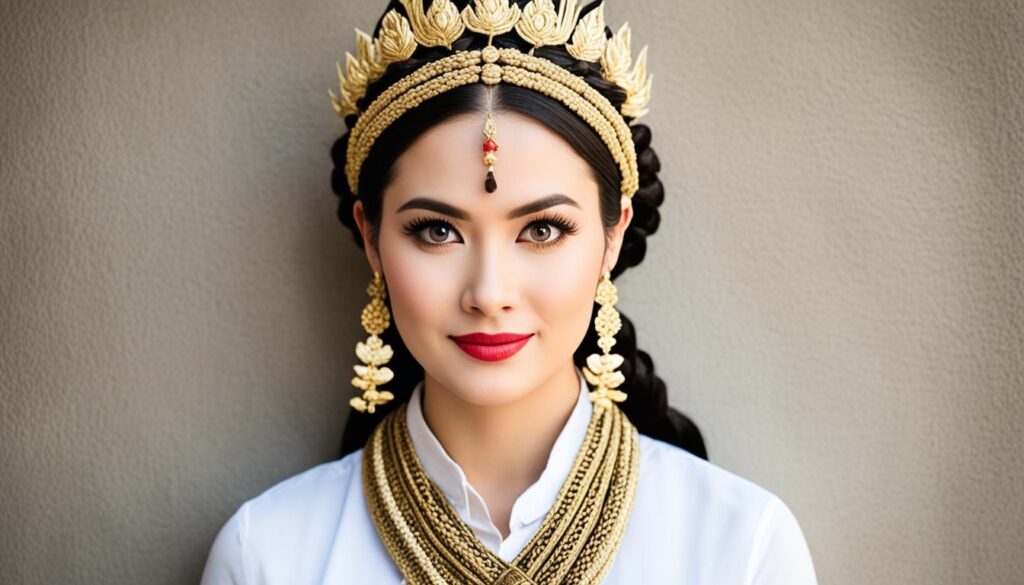
Have you ever wondered about the intricate weaving techniques and cultural significance behind Thai braids? Are you curious to know why this traditional Thai hairstyle has been a part of Thai culture for centuries?
In this article, we will delve into the fascinating world of Thai braids, also known as Phom Pia braids. Discover the artistry and craftsmanship behind Thai hair weaving techniques, explore the historical roots of these braids, and understand their cultural significance in Thai society.
Key Takeaways:
- Thai braids, also known as Phom Pia braids, are a traditional Thai hairstyle that holds cultural importance.
- They are done on natural hair without any extensions, resembling box braids.
- Thai braids were traditionally worn by young boys as a way to protect them from evil spirits.
- While Thai braids have faded in popularity, other hairstyles like smooth and straight hair, high buns, and fun colors have taken their place in Thai culture.
- Cultural sensitivity is essential when choosing hairstyles, including being aware of the potential impact of cultural appropriation.
The History of Thai Braids
Thai braids have a long and fascinating history deeply rooted in Thai culture. These traditional hairstyles hold significant cultural importance and can be traced back to ancient times.
In Thai culture, hairstyles were believed to have supernatural powers and could protect individuals from evil spirits. Thai people held strong superstitions surrounding hairstyle choices, especially for children. One popular belief was that keeping the hair neat and well-styled could ward off negative energy and ensure good fortune.
One style that emerged from these superstitions is the Phom Pia braids. Resembling box braids, Phom Pia braids were commonly worn by young boys, symbolizing their protection against malevolent spirits. These braids were meticulously crafted on natural hair, distinguishing them from box braids that incorporate hair extensions. The intricate weaving techniques of Phom Pia braids showcased the skill and creativity of Thai hairstylists.
Over time, as Thai culture evolved, the popularity of Thai braids faded, giving way to contemporary hairstyles. However, the cultural significance of Thai braids remains intact, as they represent an integral part of Thailand’s history and traditions.
Uncover the mesmerizing beauty of traditional Thai braids with this captivating image:
A Timeline of Thai Hairstyles
| Time Period | Hairstyle | Description |
|---|---|---|
| Ancient Times | Mud Chook | Mud Chook was a unique Thai hairstyle that involved twisting the hair into a knot at the back of the head, emphasizing elegance and femininity. |
| Khmer Influence | Go | The Go hairstyle, influenced by the Khmer people, featured a topknot wrapped in a white cloth, signifying purity and social status. |
| Present Day | Contemporary Thai Hairstyles | Contemporary Thai hairstyles include various trends such as smooth and straight hair, high buns, and experimenting with fun colors. |
Controversy Surrounding Thai Braids
Thai braids have faced controversy, particularly when worn by Thai celebrities. In 2020, Lisa from the music group BLACKPINK received backlash for wearing braids, with accusations of cultural appropriation. Another Thai celebrity, Grace Kanklao, also faced criticism for wearing box braids. These incidents ignited discussions around cultural appropriation and the importance of respecting the cultural significance of hairstyles.
Braids have deep historical roots in Thai culture, but there are differing opinions on whether they should be worn by Thai people today.
It’s important to consider the impact of our hairstyle choices and be mindful of cultural sensitivity. Respecting the cultural significance of different hairstyles is crucial, as cultural appropriation can cause offense and perpetuate stereotypes.
| Thai Celebrities | Controversial Hairstyles |
|---|---|
| Lisa | Braids |
| Grace Kanklao | Box braids |
“Wearing a hairstyle from a culture that is not your own can be seen as disrespectful.” – Anonymous
Perceptions on Thai Braids
Opinions on Thai braids vary. Some argue that it is a celebration and appreciation of Thai culture, while others view it as cultural appropriation. It is essential to engage in open and respectful conversations about these issues to understand diverse perspectives and promote cultural understanding.
Ultimately, it is up to individuals to educate themselves, be aware of different cultural practices, and approach hairstyle choices with cultural sensitivity.
Popular Thai Hairstyles
While Thai braids may not be as popular today, there are other hairstyles that have taken their place in Thai culture. Smooth and straight hair is considered a traditional beauty standard in Thailand, and many women strive for this look. The high bun is another common hairstyle, often worn by older Thai women for its sleek and low-maintenance nature. Additionally, there has been a rise in the popularity of fun hair colors, with women in Thailand experimenting with vibrant shades like pink, purple, and blue.

Thai hairstyles have evolved with the changing times, but they still reflect the beauty preferences of Thai women. Smooth and straight hair is often achieved through heat styling or straightening treatments, giving a sleek and polished appearance. This style is favored for its elegance and ability to make a statement.
The high bun, also known as the “jeb lai,” is a classic Thai hairstyle that exudes sophistication and effortless charm. It involves sweeping the hair up into a bun at the crown of the head, creating a sleek and timeless look. Older Thai women often opt for this hairstyle for its practicality and versatility, as it can be worn for both formal and casual occasions.
Another trend that has gained popularity in recent years is fun hair colors. Thai women are embracing vibrant shades like pink, purple, and blue to express their individuality and creativity. These bold and eye-catching colors bring a sense of playfulness and excitement to their hairstyles, allowing them to stand out from the crowd.
Whether it’s the smooth and straight hair, the elegant high bun, or the bold and fun colors, Thai hairstyles offer a range of options for women to express their personal style and embrace their unique beauty. While Thai braids may have a historical significance, these contemporary hairstyles reflect the ever-changing trends and preferences in Thai culture.
Cultural Sensitivity and Hairstyle Choices
The issue of cultural appropriation and hairstyle choices is complex. It’s important to be aware of the cultural significance of certain hairstyles and to show respect to different cultures. While it’s your personal choice how you style your hair, it’s crucial to consider the potential impact and offense that your choices may cause. Cultural appropriation is a sensitive topic, and wearing a hairstyle from a culture that is not your own can be seen as disrespectful. To avoid unintentionally offending others, it’s best to stick to hairstyles that are directly connected to your own culture.

Cultural appropriation refers to the adoption or use of elements from another culture without understanding or respecting its historical and cultural significance. Hairstyle choices, especially when it comes to borrowing from marginalized cultures, can contribute to cultural appropriation. It’s essential to educate yourself about the cultural background and context of specific hairstyles before deciding to wear them. By doing so, you can avoid disrespecting or trivializing another culture’s traditions and customs.
Respecting cultures means acknowledging and appreciating the value and contributions of diverse cultural groups without appropriating or misrepresenting their traditions. It involves understanding that hairstyles can hold deep meaning within certain cultures and that borrowing them without proper understanding or consent can be offensive. To promote cultural sensitivity, research the origins and cultural significance of the hairstyle you are interested in and, if appropriate, consult with someone who comes from that cultural background for guidance and perspective.
“Cultural sensitivity is crucial when it comes to hairstyle choices. It’s essential to recognize and respect the cultural significance of different hairstyles and avoid appropriating them from other cultures,” says Jennifer Lee, a cultural studies expert.
“When considering hairstyle choices, ask yourself: Am I honoring and appreciating a culture, or am I simply using elements of it for my own fashion statement? Respectful engagement with other cultures requires understanding and humility,”
It’s important to be mindful of the impact that your hairstyle choices can have on individuals and communities. By respecting cultures and avoiding cultural appropriation, you can contribute to a more inclusive and respectful society.
Conclusion
Thai braids have a long-standing cultural significance in Thai culture, reflecting the traditions and superstitions of generations past. Although their popularity has waned in recent times, these braids continue to hold a special place in Thai history and heritage. The controversy surrounding Thai people wearing braids serves as a reminder of the importance of cultural sensitivity and the need to respect the cultural significance of different hairstyles.
When making hairstyle choices, it is crucial to consider the potential impact on others and to show respect for diverse cultures and their traditions. The wearing of traditional Thai braids by individuals outside of Thai culture can be seen as cultural appropriation and may cause offense. It is essential to be mindful of the cultural significance of hairstyles and to choose styles that align with your own cultural heritage.
By promoting cultural sensitivity and respecting the cultural significance of different hairstyles, we can create a more inclusive environment where diverse cultures and their traditions are honored and celebrated. Understanding the cultural significance of Thai braids and other hairstyles can foster greater appreciation for Thai culture and contribute to a more harmonious and respectful society.






